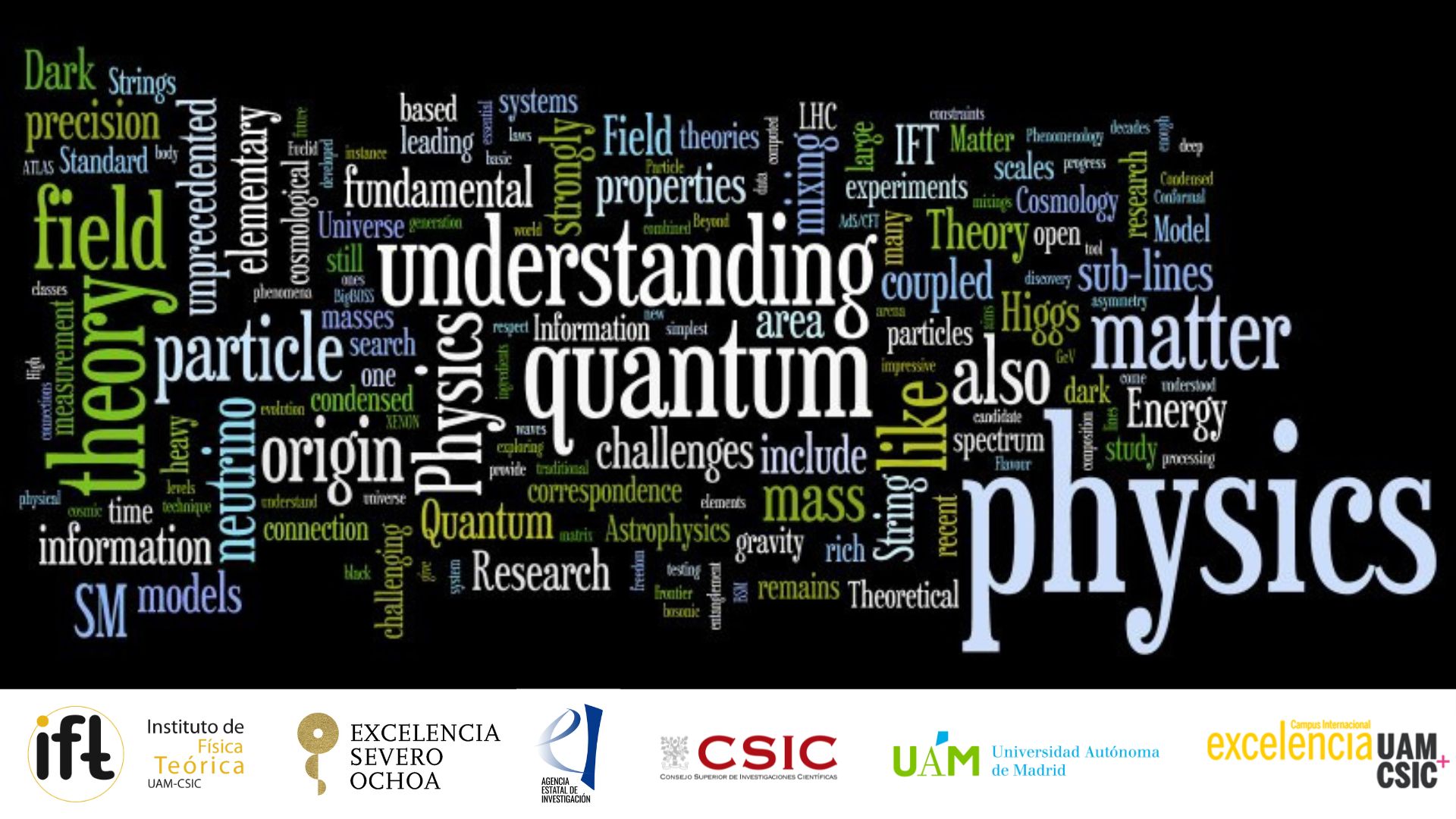Centro de Excelencia Severo Ochoa
Menú
Buscar

IFT Seminar Room/Red Room
The QCD axion relic abundance is determined by the misalignment mechanism, as well as by the evolution of axionic topological defects, if the Peccei-Quinn (PQ) symmetry is broken after inflation. In this talk we discuss two well motivated scenarios in which the axion dark matter abundance can be altered with interesting phenomenological consequences.
Firstly, we focus on axion models with domain wall number larger than one. These are characterized by the existence of a long-lived string-domain wall network which originates slightly before the QCD phase transition. Eventually, the network decays producing further axion quanta. Very interestingly, closed structures can arise as the network annihilates. We show that the collapse of those structures can lead to the formation of Primordial Black Holes (PBHs), for small values of axion decay constant. In these setups, the dark matter today is dominantly composed of axion quanta, with a small fraction of PBHs, which can help the generation of cosmological structures.
Secondly, we discuss the possibility of having a second short phase of inflation (supercooling) in the cosmological history. This can occur naturally in UV completions of the SM which address the hierarchy problem, by introducing a strongly-interacting sector at the TeV scale. The exit from this late inflationary phase can occur around the QCD phase transition. We focus on the implications for the QCD axion, showing that the abundance from the misalignment mechanism can be diluted. We also highlight the interesting implications for axionic topological defects in this scenario.
Social media